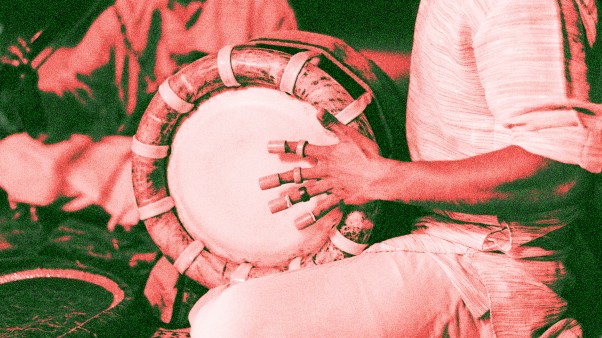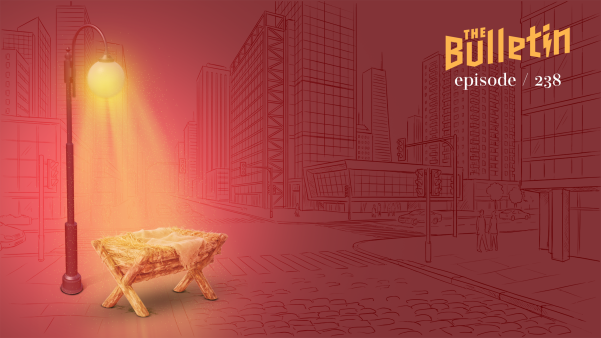In this series


I doubt I’m the only parent of Gen Zers who occasionally hears the protest “I’m not feelin’ it” on a Sunday morning.
Why Religion Went Obsolete: The Demise of Traditional Faith in America
Oxford University Press, USA
440 pages
$34.99
As Christian Smith argues in Why Religion Went Obsolete, it is widely recognized that traditional religion in America is in “a spiral of decline.” What is less understood is why. The book, as Smith describes it, “moves beyond statistics and interviews to explore the larger cultural environment” that made traditional religion (and especially Christianity) feel irrelevant to younger generations of Americans.
Smith frames much of his cultural analysis around his notion of a millennial zeitgeist that gained momentum in the early 1990s and peaked just before 2010. The idea of a zeitgeist, or a “spirit of the age,” resembles what the philosopher Michael Polanyi called “subsidiary awareness.” It proposes that within a particular culture or time period, certain background assumptions become so pervasive that we aren’t even consciously aware of them. They simply “ring true.”
Following the work of London School of Economics professor Monika Krause, Smith rehabilitates this concept as something with real empirical force rather than a vague perception of something “in the air.” Various periods are distinguished by ideas and practices that extend across spheres of social life and geographical boundaries. As examples, Smith mentions the Wild West, the Roaring Twenties, and the 1960s.
The millennial zeitgeist isn’t defined by opposition to this or that doctrine. Rather, it flows from a network of ideas, practices, technologies, and habits that make Christianity feel out of date, like a horse and buggy in the automobile age.
Much of our apologetics aims at skeptics and atheists who can give coherent arguments for their stances. But the younger Americans Smith surveyed are not deliberately rejecting religion for clearly discernible reasons. According to one of several summary statements Smith uses to outline their consensus attitudes, “It is not necessary to be well-informed about religion to criticize and dismiss it.” One respondent confessed, “The Bible makes my eyes roll,” even though he’s never read it. Many others failed to articulate their beliefs in clear or consistent ways, beyond a hazy sense that “the vibes were off,” the idiom Smith uses to close one chapter.
After revealing the results of extensive empirical surveys, including his own, Smith sketches the “contours” of the millennial zeitgeist, accentuating this portrait with several dozen popular marketing slogans (“Obey your thirst,” “Drive your ambition”) and bits of youth lingo (“You do you,” “Don’t judge me”). His examples coalesce around a fundamental dogma: individual autonomy. Many respondents gesture toward an inner divinity that withdraws from external authorities like a snail into its shell.
Smith also shows how churches themselves have contributed to this environment, often by shifting their focus from a transcendent God to the earthly horizons of moral, political, and therapeutic benefits. They have downplayed norms of communal fellowship in favor of an individualistic “Jesus and me” piety. As one self-proclaimed churchgoer tells Smith, “You don’t have to physically go to a building to praise God, you can pray at home. I just go because I get satisfaction out of it.”
In a similar vein, many religious leaders encourage going deeper within yourself rather than trusting external authorities, institutions, and traditions. As an example of where this mindset leads, Smith cites Oprah Winfrey, who once remarked, “I have church with myself. I have church walking down the street. I believe in the God force that lives inside all of us, and once you tap into that, you can do anything.”
From Smith’s findings, I was struck by three paradoxes. The first is that respondents who dislike traditional notions of a personal God who exercises judgment often praise religious systems that ratchet up the consequences for sins.
One recalls discovering Wicca in college: “I learned they believe whatever they do comes back to them 10 times,” a cosmic pattern that sounded advantageous. “Because if [other people] do something bad to you, it’s gonna hurt them a lot worse. If I had to go to a religion, I would definitely go there.” The attraction, of course, is autonomy. This person can affirm punishments for wrong behavior, so long as those punishments can be controlled and manipulated without answering to a higher judge.
A second paradox is that younger Americans bet everything on the here and now even though they have fading hopes for this life. “Younger generations face diminished economic opportunities,” Smith writes. “Their chances of achieving the American dream are slim.” But instead of raising their eyes to God, they double down on the quest for sacred experiences in this world.
Smith writes of young people seeking transcendence “in concerts, nature, dance, drugs, sports, family, clubbing, unexplained coincidences, serendipitous moments of joy.” Amid pessimism about their overall life prospects, they preoccupy themselves with transitory reprieves, cultivating “a healthy ‘fear of missing out’ (FOMO), even if it is stressful and tiring.”
A third paradox is seen in the desire of Smith’s subjects to enjoy the blessings of community without sacrificing the comforts of autonomy. As Smith writes of their mindset, “Religion is a personal ‘opinion’ of individual choice—whether religion is true or false is not at issue. . . . The possibility of a historical tradition guiding one’s life is nearly inconceivable.”
But of course it’s impossible to enjoy meaningful community if each individual is the author of his or her own religion. Younger Americans might “crave strong relationships and community,” Smith writes, but in practice they tend to “maintain [their] autonomy, safety, and options, even at the cost of some loneliness.”
Notably, none of these paradoxes suggests a complete loss of interest in spiritual matters. As Smith concludes, younger Americans might be giving up on organized religion, but they haven’t “lost interest in things supernatural, enchanted, or quasi-religious.” Many who find traditional Christianity obsolete are attracted to Neopaganism and non-Western religions. By contrast, a dogmatic secularism strikes them as “too empty and dreary to be engaging.”
But the reality of the millennial zeitgeist guarantees intense headwinds for anyone who would evangelize young people today. Why Religion Went Obsolete offers a sobering road map of the challenges ahead. Every pastor, elder, and seminarian should digest its findings.
Michael Horton is professor of systematic theology and apologetics at Westminster Seminary California. He is the author of Shaman and Sage: The Roots of “Spiritual but Not Religious” in Antiquity.

















